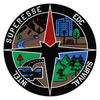When SHTF you'll need to resupply. We don't recommend looting or marauding but scavenging may be an ethically and efficent alternative. Now here's what you need to know concerning scavenging...
Questions should be considered when planning what you are scavenging for, such as:
🤔’What do we need?’
🤔‘Why do we need it?’
🤔‘Where can we find it?’
🤔‘How are we going to store or carry it?’
These questions should include #survival needs such as food, water, equipment, #communication, and logistics.
In the case of a #nuclear or #EMP attack, where there a country’s ability to supply its population with products (including food) can be #destabilized, #scavengers should consider the journey those products take from origin to disposal.
Most of our products follow similar journeys. If we think about this journey, we can get a good idea of where to look when the supermarket runs out of food, the pharmacy runs out of medical supplies, and more.
If we think of the journey our food needs to take to go from farmer or production line and waste bin, we will find quite a number of places that scavengers should target. So where are these places? Some prime scavenger resource spots would be:
📃Farms
📃Supply lines (trucks, ships, train, and autos)
📃Distribution centers (warehouses)
📃Marketplaces
📃Abandoned stores
📃Processing factories
📃Homes
📃Rubbish gathering areas
📃Abandoned Cars.
Think outside the box. Avoid high population centers. Try to target areas that would attract others. Tractor trailers should be you aim. Carry bolt cutters and a box knife. Open the trailer door and do a quick scan of the items. Use the knife to check in boxes to see if the items would be of survival value, if not move on to the next trailer.
Consider office buildings that have their on cafeteria. Schools, colleges, and hotels often have food storages for their cafeteria or breakfast service. They are not likely to be high value targets to the unknowing.
This blog's purpose is to get you to think outside the box. I hope it's given you some ideas to consider. Info above was shared in part from The Prepping Guide. I suggest you checkout our entire guide below...
ICERS
📲Download our prepping template, ICERS. It's not about scavenging but it will layout the groundwork for survival in a post SHTF world.
BARTERING AND SCAVENGING
We've got an entire downloadable guide on bartering, scavenging, looting, marauding, foraging, etc. Download it here.
This guide provides information on how to utilize the art of negotiation and trade to facilitate an exchange of goods between persons and groups. The emphasis is placed on bartering for supplies during a state of civil unrest, systematic breakdown of transportation of goods, shortages, and post-apocalyptic conditions. Tips will provide insight on what items should be valued and targeted during a trade and which items are expandable.
The guide will further discuss the opportunities scavenging presents by providing examples of locations to raid, how to transport goods obtain, where to find value in unexpected areas
Finally, we'll summarize an array of supply collection methods and provide a list of high value items (HVI) along with a list of perceived HVI that should be traded immediately.
Bottom Line Up Front (BLUF):
-
Assess Supplies and Sustainment Capabilities.
- Scout Potential Resources and Trade Opportunities.
- Formulate plan of action to meet other Groups for Bartering or raid Abandoned location for Scavenging of Items.
- Analyze Security Concerns such as Site Selection, Overwatch, Risk vs Rewards, etc.
- Discuss outlying options such as marauding, standard purchase, indenturement, foraging, etc.
- Utilize included review and checklist of High Value Items (HVI) and take note of our classification of standards non-essential, and sustainment HVIs.
Download the entire guide here.
#urbansurvival #tactics #prepping #survivalguide #looting #scavenging #marauders #doomsdaypreppers #bugout #bartering

